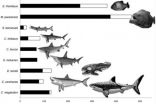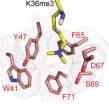(Press-News.org) ROCHESTER, Minn. -- For nearly a decade, breast cancer researchers studying the hormone therapy tamoxifen have been divided as to whether genetic differences in a liver enzyme affect the drug's effectiveness and the likelihood breast cancer will recur. A new study by researchers from the Mayo Clinic Cancer Center and the Austrian Breast and Colorectal Cancer Study Group provides evidence that genetic differences in the enzyme CYP2D6 play a key role in how well tamoxifen works.
"Our findings confirm that, in early breast cancer treated with tamoxifen, genetic alterations in CYP2D6 lead to a higher likelihood of recurrence and death," says Mayo Clinic oncologist Matthew Goetz, M.D., lead author of the study in the journal Clinical Cancer Research.
In the clinical trial, Dr. Goetz and his colleagues studied the rates of cancer recurrence and death in two groups: postmenopausal women with primary estrogen receptor-positive breast cancer who received tamoxifen for five years and those who received tamoxifen for two years followed by the aromatase inhibitor anastrozole for three years. Anastrozole is a breast cancer drug whose metabolism does not require the CYP2D6 enzyme.
The study showed that women who were born with genetic alterations of CYP2D6 that abolish the enzyme's critical metabolizing activity and who took tamoxifen for five years had recurrence of breast cancer, or died at a rate 2.5 times higher than women with normal CYP2D6 enzyme activity. Women with intermediate levels of the CYP2D6 enzyme had rates of recurrence or death 1.7 times higher than women with normal CYP2D6 activity. Importantly, Dr. Goetz notes, that genetic alterations in CYP2D6 did not affect the likelihood of recurrence or death in women who switched to anastrozole after two years of tamoxifen.
"Switching from tamoxifen to an aromatase inhibitor may be one reason for the discrepant studies surrounding CYP2D6 and tamoxifen -- as information about whether a patient took an aromatase inhibitor after tamoxifen was not available in most of the prior studies," says senior author James Ingle, M.D., of Mayo Clinic, an expert on hormone therapies for breast cancer.
A blood test can determine whether a woman has alterations in CYP2D6 and predict how efficiently her body will convert tamoxifen to endoxifen. Approximately 5 to 7 percent of European and North American populations are considered poor metabolizers of tamoxifen.
"The results of this successful high-level international research collaboration are an important step forward in our quest to individualize breast cancer treatment and provide tailored care to women with breast cancer," says Michael Gnant, M.D., professor of surgery at the Medical University of Vienna and president of the Austrian study group.
So what should a woman do if she is unable to effectively metabolize tamoxifen into its most active form? Dr. Goetz believes that the current recommendation of switching from tamoxifen to an aromatase inhibitor is likely to result in the greatest benefit in women with decreased CYP2D6 metabolism. For CYP2D6 poor metabolizers, avoiding tamoxifen altogether and starting out with an aromatase inhibitor may be the best approach, he says.
Dr. Goetz's group is working with the National Cancer Institute to develop endoxifen as an alternative to tamoxifen. If women can be given endoxifen, the active part of tamoxifen, it won't matter how tamoxifen gets metabolized, he says.
###
MULTIMEDIA ALERT: Video of Dr. Goetz is available on the Mayo Clinic News Network.
The study is partially funded by the National Institutes of Health, co-authors include Vera Suman, Ph.D.; Tanya Hoskin; Mary Kuffel; Stephanie Safgren; Carol Reynolds, M.D.; Matthew Ames, Ph.D.; and Richard Weinshilboum, M.D., all of Mayo Clinic; Martin Filipits, Ph.D.; Raimund Jakesz and Margaretha Rudas of the Medical University of Vienna; Richard Greil and Otto Dietze of Paracelsus Medical University, Salzburg, Austria; and Alois Lange and Felix Offner of Medical Hospital Feldkirch, Austria.
About Mayo Clinic Cancer Center
As a leading institution funded by the National Cancer Institute, Mayo Clinic Cancer Center conducts basic, clinical and population science research, translating discoveries into improved methods for prevention, diagnosis, prognosis and therapy. For information on cancer clinical trials, call 507-538-7623.
About Mayo Clinic
Mayo Clinic is a nonprofit worldwide leader in medical care, research and education for people from all walks of life. For more information, visit MayoClinic.com or MayoClinic.org/news.
Journalists can become a member of the Mayo Clinic News Network for the latest health, science and research news and access to video, audio, text and graphic elements that can be downloaded or embedded. END
PHILADELPHIA – Nearly half of the 700,000 cancer patients who undergo surgical removal of a primary tumor each year suffer a recurrence of their disease at some point, and many of those patients will eventually die from their disease. The traditional view of recurrent tumors is that they are resistant to therapy because they've acquired additional genetic mutations that make them more aggressive and impervious to drugs. Now, however, researchers at the Perelman School of Medicine at the University of Pennsylvania show in an animal model that the enhanced aggressiveness ...
Taking into consideration its size, an ancient relative of piranhas weighing about 20 pounds delivered a bite with a force more fierce than prehistoric whale-eating sharks, the four-ton ocean-dwelling Dunkleosteus terrelli and – even – Tyrannosaurus rex.
Besides the force of the bite, Megapiranha paranensis appears to have had teeth capable of shearing through soft tissue the way today's piranhas do, while also being able to pierce thick shells and crack armoring and bones, according to Stephanie Crofts, a University of Washington doctoral student in biology.
"If our ...
Many of the most common inpatient surgeries in the United States are performed electively. These surgeries are expected to significantly increase with the enactment of the Affordable Care Act. In a new perspectives article, published in the Dec. 27 edition of The New England Journal of Medicine, a team of Weill Cornell Medical College researchers are recommending the nation's health care leaders and medical community join forces to establish evidence-based appropriateness criteria to determine which patients are most in need of elective procedures, such as joint replacement ...
CHAPEL HILL - Long-standing research efforts have been focused on understanding how stem cells, cells capable of transforming into any type of cell in the body, are capable of being programmed down a defined path to contribute to the development of a specific organ like a heart, lung, or kidney. Research from the University of North Carolina at Chapel Hill School of Medicine has shed new light on how epigenetic signals may function together to determine the ultimate fate of a stem cell.
The study, published December 27, 2012 by the journal Molecular Cell, implicates ...
Congenital hyperinsulinism is a genetic condition where a baby's pancreas secretes too much insulin. It affects approximately one in 50,000 live births and in severe cases requires the surgical removal of all or part of the pancreas.
Researchers at the University of Exeter Medical School are the first in the world to utilise new genetic sequencing technology to sequence the entirety of a gene in order to identify mutations that cause hyperinsulinism. Previously, existing technology limited such sequencing to only part of the coding regions of the gene which meant that ...
Researchers at McGill University have discovered that a key regulator of energy metabolism in cancer cells known as the AMP-activated protein kinase (AMPK) may play a crucial role in restricting cancer cell growth. AMPK acts as a "fuel gauge" in cells; AMPK is turned on when it senses changes in energy levels, and helps to change metabolism when energy levels are low, such as during exercise or when fasting. The researchers found that AMPK also regulates cancer cell metabolism and can restrict cancer cell growth.
The discovery was made by Russell (Rusty) Jones, an assistant ...
KANSAS CITY, MO—Unlike less versatile muscle or nerve cells, embryonic stem cells are by definition equipped to assume any cellular role. Scientists call this flexibility "pluripotency," meaning that as an organism develops, stem cells must be ready at a moment's notice to activate highly diverse gene expression programs used to turn them into blood, brain, or kidney cells.
Scientists from the lab of Stowers Investigator Ali Shilatifard, Ph.D., report in the December 27, 2012 online issue of Cell that one way cells stay so plastic is by stationing a protein called Ell3 ...
In the period just before they went extinct, the American lions and saber-toothed cats that roamed North America in the late Pleistocene were living well off the fat of the land.
That is the conclusion of the latest study of the microscopic wear patterns on the teeth of these great cats recovered from the La Brea tar pits in southern California. Contrary to previous studies, the analysis did not find any indications that the giant carnivores were having increased trouble finding prey in the period before they went extinct 12,000 years ago.
The results, published on ...
PHILADELPHIA - When trying to determine the root cause of a person's dementia, using an MRI can effectively and non-invasively screen patients for Alzheimer's disease or Frontotemporal Lobar Degeneration (FTLD), according to a new study by researchers from the Perelman School of Medicine at the University of Pennsylvania. Using an MRI-based algorithm effectively differentiated cases 75 percent of the time, according to the study, published in the December 26th, 2012, issue of Neurology®, the medical journal of the American Academy of Neurology. The non-invasive approach ...
A national drug shortage has been linked to a higher rate of relapse among children, teenagers and young adults with Hodgkin lymphoma enrolled in a national clinical trial, according to research led by St. Jude Children's Research Hospital.
Estimated two-year cancer-free survival for patients enrolled in the study fell from 88 to 75 percent after the drug cyclophosphamide was substituted for mechlorethamine for treatment of patients with intermediate- or high-risk Hodgkin lymphoma. The study was launched before the drug shortages began. The change occurred after a mechlorethamine ...



